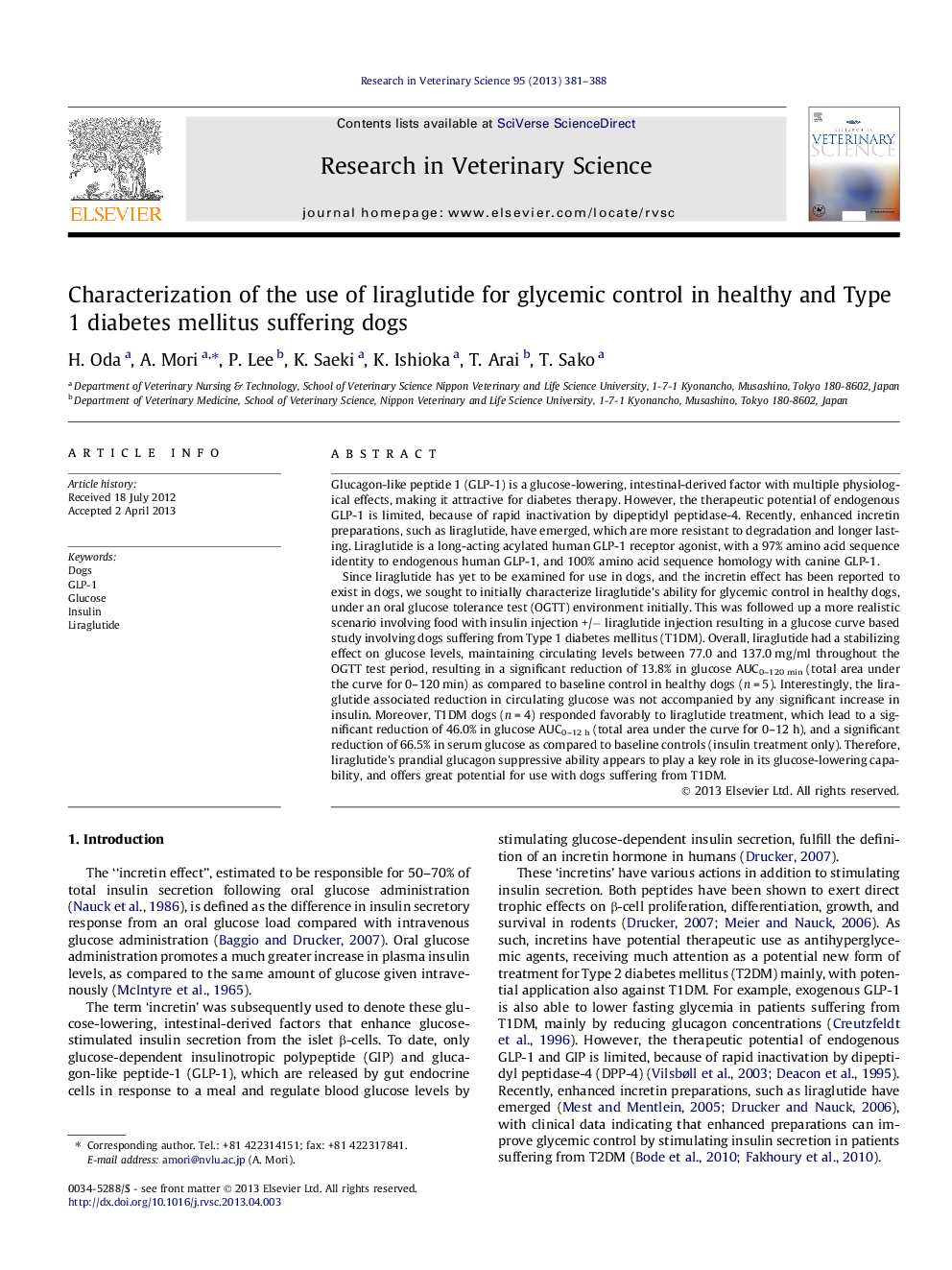| Article ID | Journal | Published Year | Pages | File Type |
|---|---|---|---|---|
| 2455084 | Research in Veterinary Science | 2013 | 8 Pages |
Glucagon-like peptide 1 (GLP-1) is a glucose-lowering, intestinal-derived factor with multiple physiological effects, making it attractive for diabetes therapy. However, the therapeutic potential of endogenous GLP-1 is limited, because of rapid inactivation by dipeptidyl peptidase-4. Recently, enhanced incretin preparations, such as liraglutide, have emerged, which are more resistant to degradation and longer lasting. Liraglutide is a long-acting acylated human GLP-1 receptor agonist, with a 97% amino acid sequence identity to endogenous human GLP-1, and 100% amino acid sequence homology with canine GLP-1.Since liraglutide has yet to be examined for use in dogs, and the incretin effect has been reported to exist in dogs, we sought to initially characterize liraglutide’s ability for glycemic control in healthy dogs, under an oral glucose tolerance test (OGTT) environment initially. This was followed up a more realistic scenario involving food with insulin injection +/− liraglutide injection resulting in a glucose curve based study involving dogs suffering from Type 1 diabetes mellitus (T1DM). Overall, liraglutide had a stabilizing effect on glucose levels, maintaining circulating levels between 77.0 and 137.0 mg/ml throughout the OGTT test period, resulting in a significant reduction of 13.8% in glucose AUC0–120 min (total area under the curve for 0–120 min) as compared to baseline control in healthy dogs (n = 5). Interestingly, the liraglutide associated reduction in circulating glucose was not accompanied by any significant increase in insulin. Moreover, T1DM dogs (n = 4) responded favorably to liraglutide treatment, which lead to a significant reduction of 46.0% in glucose AUC0–12 h (total area under the curve for 0–12 h), and a significant reduction of 66.5% in serum glucose as compared to baseline controls (insulin treatment only). Therefore, liraglutide’s prandial glucagon suppressive ability appears to play a key role in its glucose-lowering capability, and offers great potential for use with dogs suffering from T1DM.
